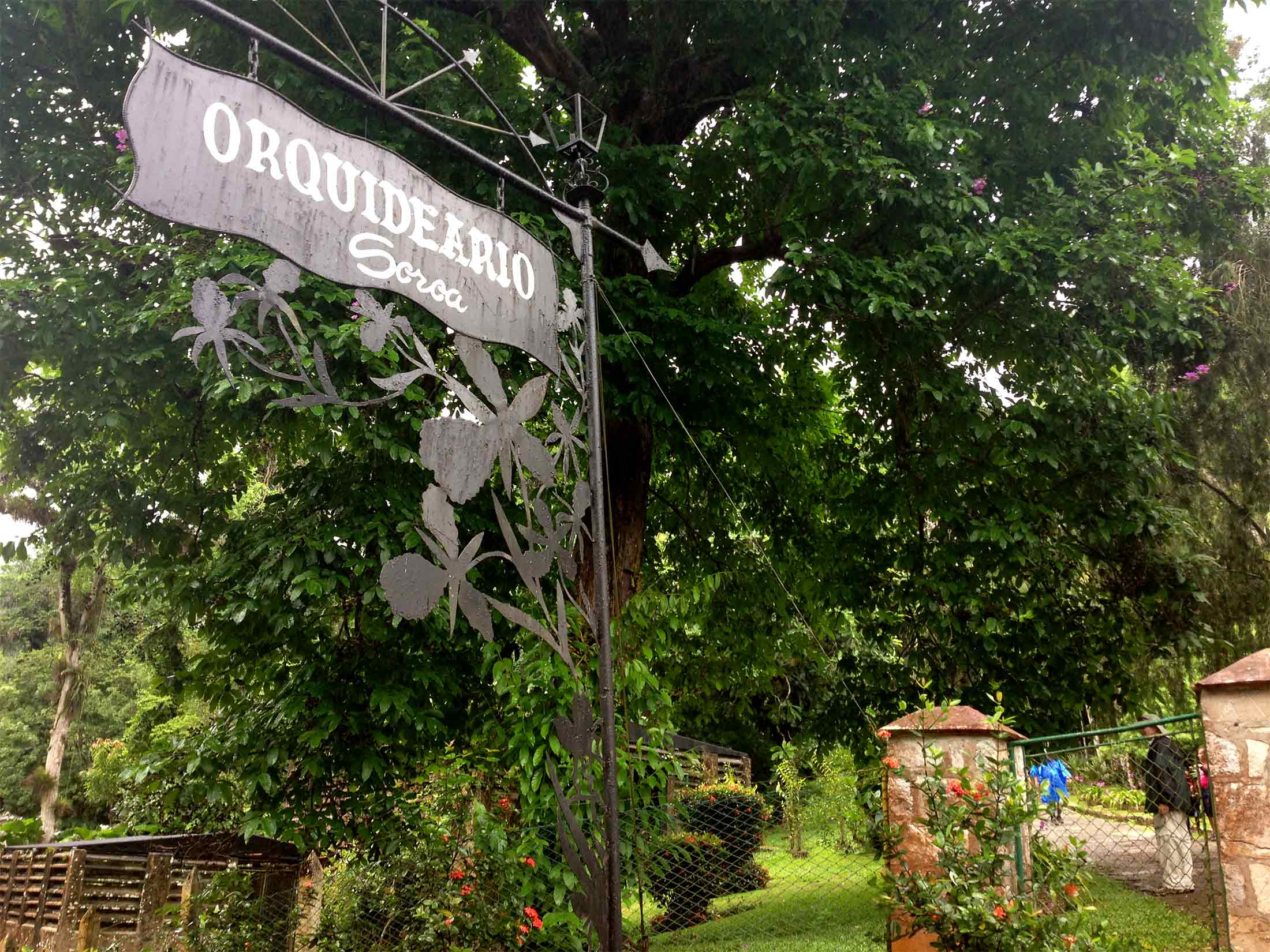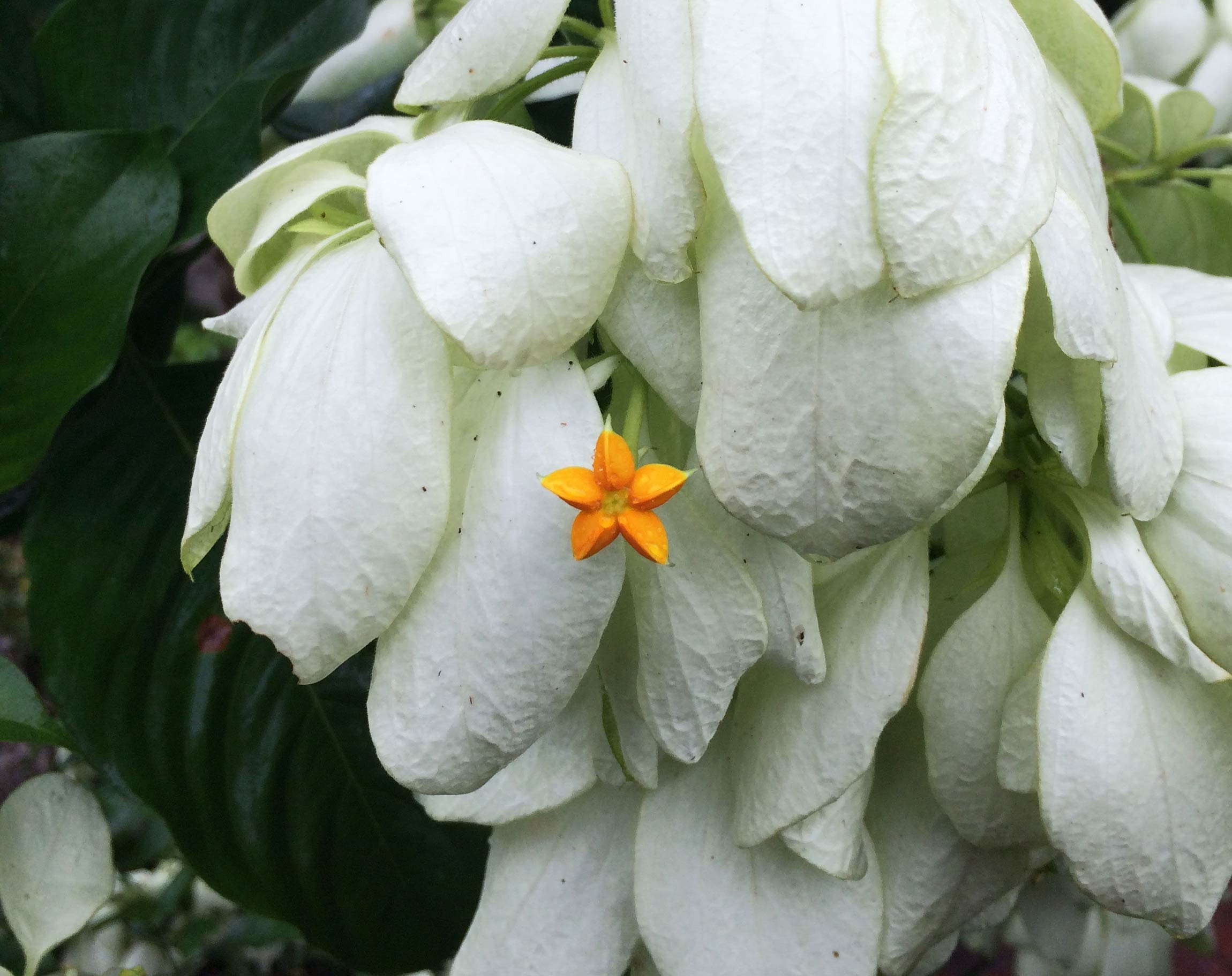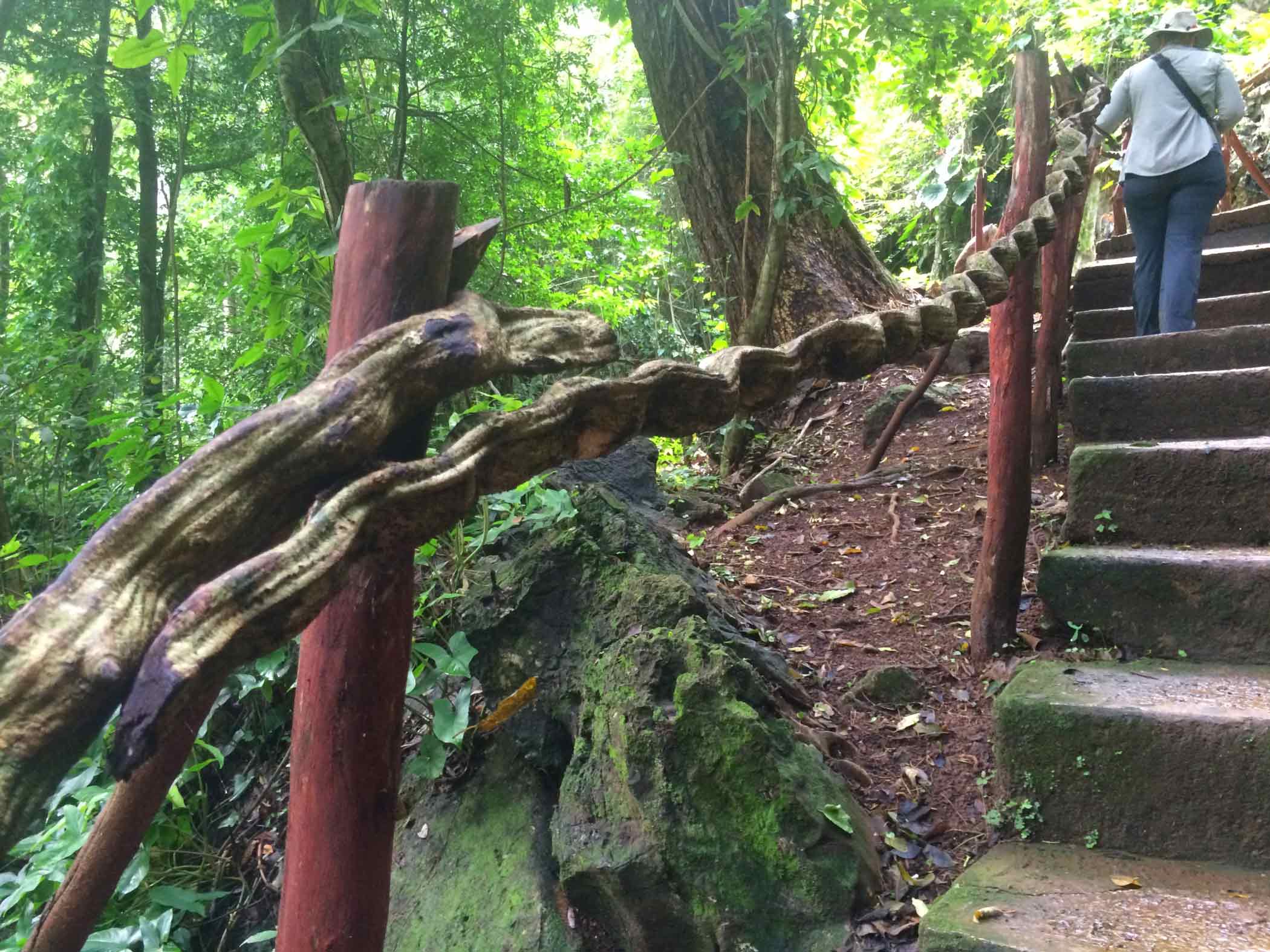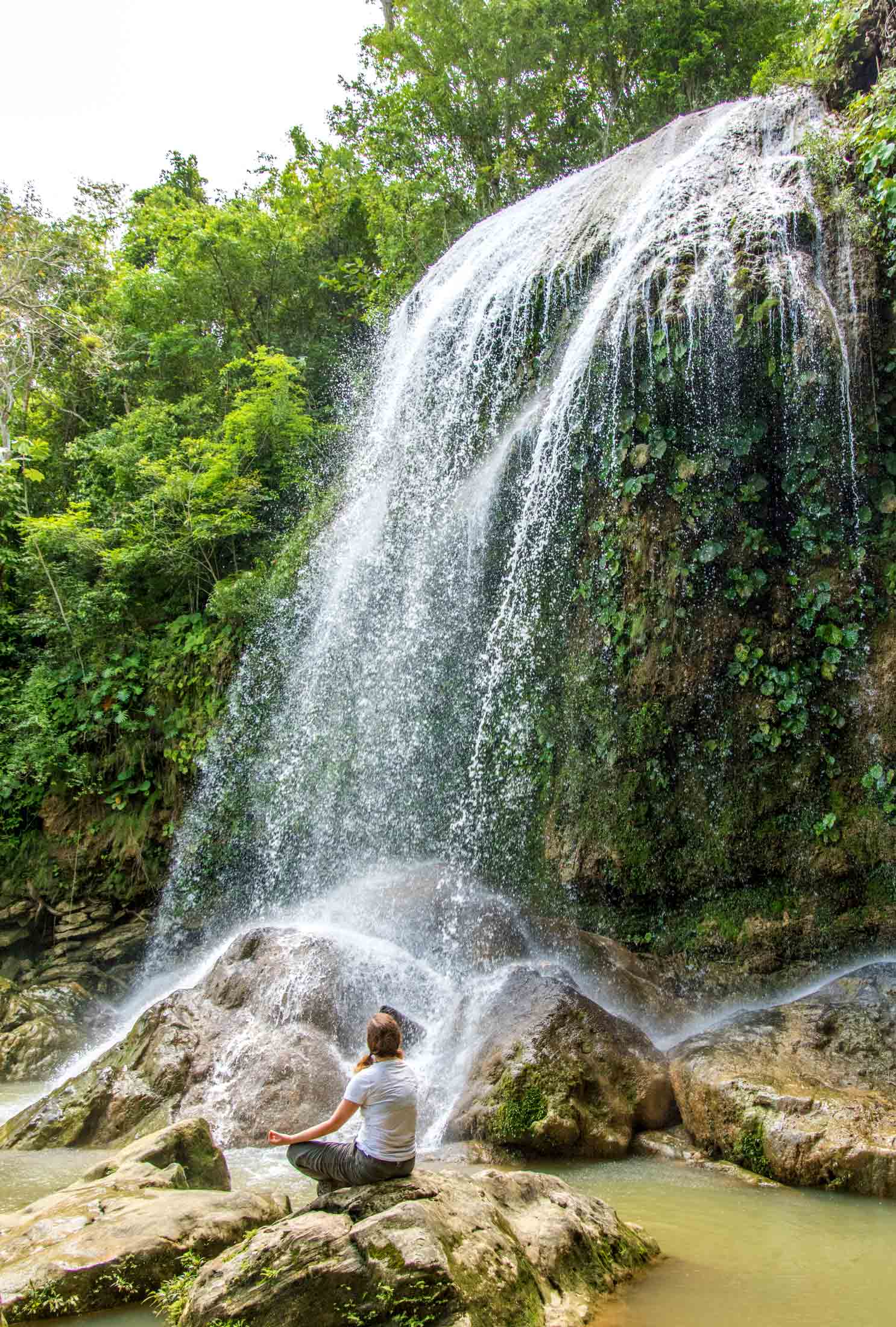Blog

Octopus Orchids and Sulfurous Streams in Cuba
As part of the three-year planning and design process behind our upcoming Tropical Forest exhibit, Dr. Emily Kalnicky and Jordyn Melino are traveling to Cuba to study first-hand the region’s biodiversity hotspots, natural resources and culture. Follow their adventures!
This morning we toured the local orquideario, or orchidarium, run by the University of Pinar Del Rio; they have 48 employees, ten of whom are gardeners, and two of whom are orchid specialists. Our guide mentioned that Cuba is home to around 250 endemic orchid species.

One of the more interesting native orchids is the octopus orchid (Prosthechea cochleata) with a unique purple and green flower. There were quite a few ornamental plants on the property as well, as it was a private residence previously. Many crotons, bromeliads, and cycads. A very showy plant that is not native but used ornamentally is this area, Mussaenda philippica, has large white or red bracts and a small yellow star-shaped flower. There were some limestone outcroppings throughout the property, and our tour guide pointed out the camouflage tree (Ficus sp.) which was growing right out of the side of the rock and had bark the perfectly blended in with the rocky, limestone background.

After lunch, we took a short guided hike through the surrounding forest, which was muddy and slippery from the last two days of rain. There is a sulfurous stream running through the forest (smelled lovely!), with sulfur and other minerals coming from the area’s limestone formations. We encountered little surprises along the way, including a really interesting “net” mushroom (Dictyophora indusiata), resurrection fern (Polypodium polypodioides), and an orange-blooming Costus. In the middle of the forest was a large 600-year-old Ceiba pentandra that had a small altar at the base of the tree. Our guide explained that this tree is sacred in Afro-Cuban religions, and that it is illegal to cut down one of these trees in Cuba.

We also took a hike to see a nearby waterfall. The walk included over 250 steps, some steep and slippery, requiring us to hold onto the hand rails. Some of the hand rails were made with monkey ladder vine, a distinctly wavy and woody vine, that actually makes for a pretty decent hand rail. The waterfall, named El Salto (Spanish for “the jump”), has a height of about 66 feet, beautifully cascading on the large rocks below. As we arrived, people were enjoying the water near the cascade and bathing on the rocks in the sun. We noticed a shrub with long, tubular flowers growing out of the rocks near the waterfall, but it was too far away to identify it. As we had traveled back up the steps to leave, we saw the same plant growing along the stream bed. We took a leaf with us to have our botany guide identify it for us, which she later told us was Exostema longiflorum.

We ate dinner at a local paladar which was someone’s private home and art studio. We had vegetable soup with chunks of corn on the cob, plantains, and potatoes. The main dish was a cooked dish of squash, corn bread and plantains, served with a side of rice. They also served lamb and ropa vieja (shredded beef, with a literal translation of “old clothes” for its tattered appearance). Inside, the art studio had a collection of local art on display, made by either visiting artists or the resident artist and family.
Select photos © Paul g. Wiegman

